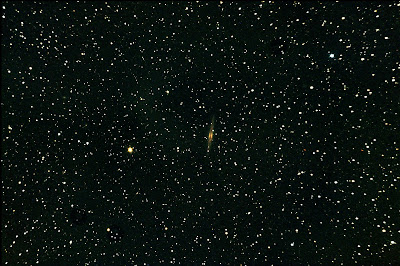IC 434 - The Horsehead Nebula
A little taste of the winter sky, captured around 4 a.m. I hadn't planned on staying up quite that late, but when I spotted Orion climbing above the treeline, I couldn't resist taking a try at the Horsehead.
M45 - Pleiades

NGC 1805
This image captures part of a large nebula complex, sometimes referred to as the Heart Nebula. The full nebula is larger than the Starshoot Pro's field of view.
 Ten, 600-second sub-exposures were combined to create this image with a total exposure time of 100 minutes.
Ten, 600-second sub-exposures were combined to create this image with a total exposure time of 100 minutes.NGC 7293 - The Double Helix Nebula
This faint planetary nebula in Aquarius is the result of a star's death throes and formed about 10,000 years ago. The nebula is about 700 light years away.

IC 5146
A parting shot at the Cocoon Nebula as its slips away.
 Eight, 300-second sub-exposures were stacked to create this 45 minute exposure, taken on September 19
Eight, 300-second sub-exposures were stacked to create this 45 minute exposure, taken on September 19M33
The Triangulum Galaxy is a spiral galaxy, seen face on, located about three millions light years away in the direction of the constellation Triangulum (near Andromeda).
















